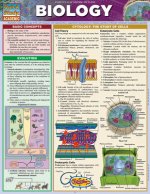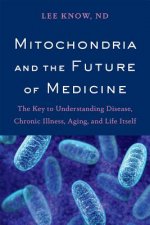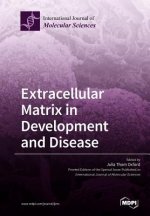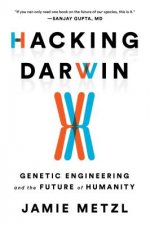
Kód: 05084280
Annals Meeting Reports
Autor Douglas Braaten
This Annals volume presents four scholarly meeting reports: (1) Application of combined omics platforms to accelerate biomedical discovery in diabesity; (2) Prioritizing health disparities in medical education to improve care; ( ... celý popis
- Jazyk:
 Angličtina
Angličtina - Väzba: Brožovaná
- Počet strán: 252
Nakladateľ: New York Academy of Sciences, 2013
- Viac informácií o knihe

98.84 €

Skladom u dodávateľa v malom množstve
Odosielame za 12 - 17 dní
Potrebujete viac kusov?Ak máte záujem o viac kusov, preverte, prosím, najprv dostupnosť titulu na našej zákazníckej podpore.
Pridať medzi želanie
Mohlo by sa vám tiež páčiť
-

Thucydides
25.78 € -

Audience Analysis
165.55 € -

Piano Play-Along Volume 83
20.97 € -2 % -

Help Your Partner Say 'Yes'
10.22 € -

Science and Technology of Flexible Packaging
385.14 € -

Free Burma
40.31 €
Darčekový poukaz: Radosť zaručená
- Darujte poukaz v ľubovoľnej hodnote, a my sa postaráme o zvyšok.
- Poukaz sa vzťahuje na všetky produkty v našej ponuke.
- Elektronický poukaz si vytlačíte z e-mailu a môžete ho ihneď darovať.
- Platnosť poukazu je 12 mesiacov od dátumu vystavenia.
Viac informácií o knihe Annals Meeting Reports
Nákupom získate 244 bodov
 Anotácia knihy
Anotácia knihy
This Annals volume presents four scholarly meeting reports: (1) Application of combined omics platforms to accelerate biomedical discovery in diabesity; (2) Prioritizing health disparities in medical education to improve care; (3) The paradox of overnutrition in aging and cognition; and vitamin D: beyond bone. Diabesity has become a popular term to describe the specific form of diabetes that develops late in life and is associated with obesity. While there is a correlation between diabetes and obesity, the association is not universally predictive. Defining the metabolic characteristics of obesity that lead to diabetes, and how obese individuals who develop diabetes different from those who do not, are important goals. The use of large-scale omics analyses (e.g., metabolomic, proteomic, transcriptomic, and lipidomic) of diabetes and obesity may help to identify new targets to treat these conditions. This report discusses how various types of omics data can be integrated to shed light on the changes in metabolism that occur in obesity and diabetes. Despite yearly advances in life-saving and preventive medicine, as well as strategic approaches by governmental and social agencies and groups, significant disparities remain in health, health quality, and access to health care within the United States. The determinants of these disparities include baseline health status, race and ethnicity, culture, gender identity and expression, socioeconomic status, region or geography, sexual orientation, and age. In order to renew the commitment of the medical community to address health disparities, particularly at the medical school level, we must remind ourselves of the roles of doctors and medical schools as the gatekeepers and the value setters for medicine. Within those roles are responsibilities toward the social mission of working to eliminate health disparities. This effort will require partnerships with communities as well as with academic centers to actively develop and to implement diversity and inclusion strategies. Besides improving the diversity of trainees in the pipeline, access to health care can be improved, and awareness can be raised regarding population-based health inequalities. Populations of many countries are becoming increasingly overweight and obese, driven largely by excessive calorie intake and reduced physical activity; greater body mass is accompanied by epidemic levels of comorbid metabolic diseases. At the same time, individuals are living longer. The combination of aging and the increased prevalence of metabolic disease is associated with increases in aging-related comorbid diseases such as Alzheimer's disease, cerebrovascular dementia, and sarcopenia. Here, correlative and causal links between diseases of overnutrition and diseases of aging and cognition are explored. In recent years, vitamin D has been received increased attention due to the resurgence of vitamin D deficiency and rickets in developed countries and the identification of extraskeletal effects of vitamin D, suggesting unexpected benefits of vitamin D in health and disease, beyond bone health. The possibility of extraskeletal effects of vitamin D was first noted with the discovery of the vitamin D receptor (VDR) in tissues and cells that are not involved in maintaining mineral homeostasis and bone health, including skin, placenta, pancreas, breast, prostate and colon cancer cells, and activated T cells. However, the biological significance of the expression of the VDR in different tissues is not fully understood, and the role of vitamin D in extraskeletal health has been a matter of debate. This report summarizes recent research on the roles for vitamin D in cancer, immunity and autoimmune diseases, cardiovascular and respiratory health, pregnancy, obesity, erythropoiesis, diabetes, muscle function, and aging. NOTE: Annals volumes are available for sale as individual books or as a journal. For information on institutional journal subscriptions, please visit http://ordering.onlinelibrary.wiley.com/subs.asp?ref=1749-6632&doi=10.1111/(ISSN)1749-6632 . ACADEMY MEMBERS: Please contact the New York Academy of Sciences directly to place your order ( www.nyas.org ). Members of the New York Academy of Science receive full-text access to Annals online and discounts on print volumes. Please visit http://www.nyas.org/MemberCenter/Join.aspx for more information about becoming a member.
 Parametre knihy
Parametre knihy
Zaradenie knihy Knihy po anglicky Mathematics & science Biology, life sciences
98.84 €
- Celý názov: Annals Meeting Reports
- Autor: Douglas Braaten
- Jazyk:
 Angličtina
Angličtina - Väzba: Brožovaná
- Počet strán: 252
- EAN: 9781573319300
- ISBN: 1573319309
- ID: 05084280
- Nakladateľ: New York Academy of Sciences
- Hmotnosť: 152 g
- Rozmery: 252 × 155 × 5 mm
- Dátum vydania: 03. July 2013
Obľúbené z iného súdka
-

Behave
21.27 € -2 % -

Behave
34.37 € -7 % -

Biology: A Global Approach, Global Edition
78.78 € -

Molecular & Cell Biology For Dummies, 2nd Edition
20.86 € -20 % -

Biology
138.13 € -

Advanced Biology
79.39 € -

Goodness Paradox
19.74 € -8 % -

Scent and Chemistry - The Molecular World of Odors
90.14 € -14 % -

Alan Turing - The Enigma - The Book That Inspired the Film The Imitation Game - Updated Edition
12.17 € -

Immortal Life of Henrietta Lacks
16.98 € -

Fantastic Fungi
34.17 € -6 % -

Ecology - From Individuals to Ecosystems 5e
65.17 € -7 % -

Oxford IB Study Guides: Biology for the IB Diploma
44.71 € -

A-Level Biology: AQA Year 1 & 2 Complete Revision & Practice with Online Edition
28.33 € -9 % -

Biology - A Self-Teaching Guide, Third Edition
20.86 € -20 % -

Biology Coloring Workbook, 2nd Edition
24.85 € -5 % -

Cartoon Guide to Biology
22.91 € -6 % -

Biophilia
33.45 € -12 % -

Bovine Reproduction, 2nd Edition
374.60 € -

Campbell Biology in Focus, Global Edition
91.16 € -

A-Level Biology: AQA Year 1 & AS Exam Practice Workbook - includes Answers
8.07 € -9 % -

Blood and Its Third Element
19.53 € -

Preparing Dinosaurs
89.63 € -11 % -

Biology
7.97 € -6 % -

Mitochondria and the Future of Medicine
21.99 € -23 % -

Handbook of Biological Illustration
40.31 € -

Extracellular Matrix in Development and Disease
91.98 € -

Schaum's Outline of Biology, Fifth Edition
38.67 € -12 % -

Oxford IB Diploma Programme: Biology Course Companion
69.06 € -

Pearson Baccalaureate Biology Higher Level 2nd edition print and ebook bundle for the IB Diploma
96.69 € -

Biology for the IB Diploma Study and Revision Guide
41.23 € -

Seven and a Half Lessons About the Brain
16.57 € -23 % -

Oxford IB Diploma Programme: IB Biology Print and Enhanced Online Course Book Pack
101.50 € -

ISE Vertebrates: Comparative Anatomy, Function, Evolution
77.04 € -

DNA
14.42 € -23 % -

Biology For Dummies 3e
19.33 € -20 % -

IB Environmental Systems and Societies Print and Online Pack
90.75 € -

Bioinformatics For Dummies 2e
26.39 € -20 % -

Ib Biology Online Course Book 2014 Edition: Oxford Ib Diploma Programme
115.31 € -

Molecular Ecology, Third Edition
85.84 € -

Dirt
25.67 € -2 % -

Internal Assessment for Biology for the IB Diploma
41.12 € -

Genius of Birds
16.46 € -12 % -

ISE Vander's Human Physiology
77.45 € -

Microbiology & Infectious Diseases Flashcards, Third Edition
56.78 € -

Biology for the IB MYP 4 & 5
54.12 € -

Hacking Darwin
23.42 € -14 % -

Growth of Biological Thought
50.54 € -

Campbell Biology: Concepts & Connections, Global Edition
98.84 €
Osobný odber Bratislava a 2642 dalších
Copyright ©2008-24 najlacnejsie-knihy.sk Všetky práva vyhradenéSúkromieCookies


 21 miliónov titulov
21 miliónov titulov Vrátenie do mesiaca
Vrátenie do mesiaca 02/210 210 99 (8-15.30h)
02/210 210 99 (8-15.30h)